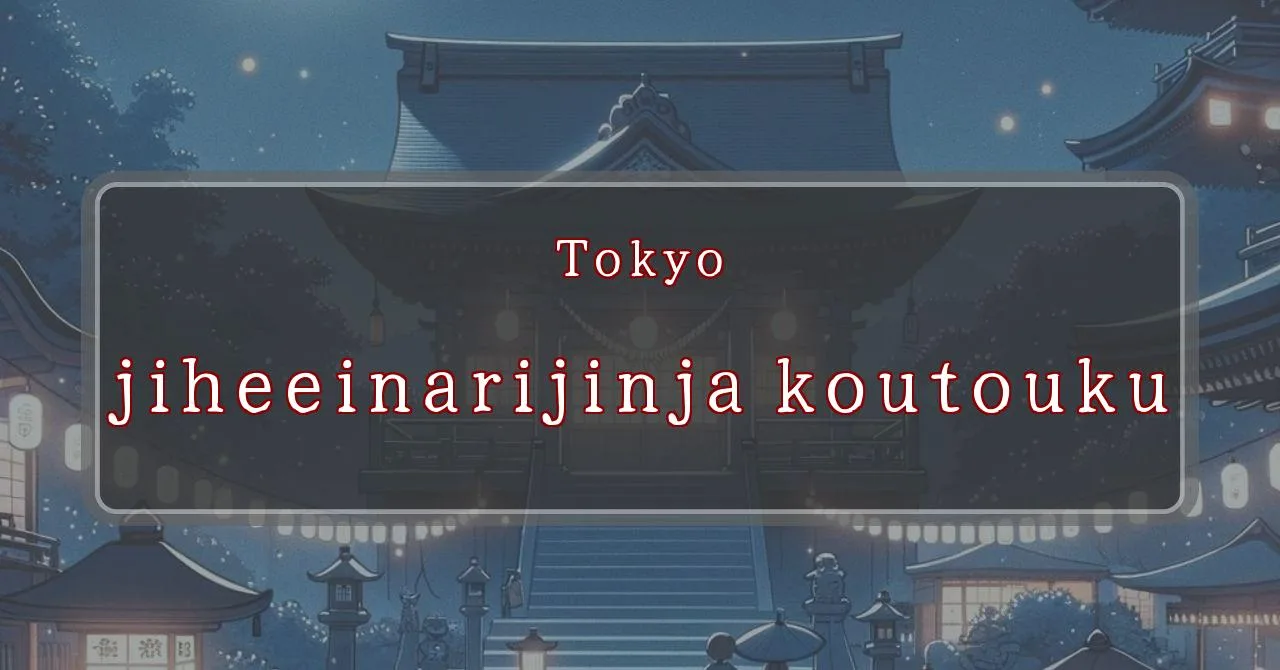Divine illumination at Tokyo’s summer festival
Basic Information
Jihei Inari Shrine is a historical shrine located in Tokyo’s vibrant Koto Ward, deeply revered by the local community.
- Address: 3-21-11 Kitasuna, Koto-ku, Tokyo
- Phone Number: Information not provided
- Access: Easily accessible by public transportation; detailed directions can be found on the shrine’s official website or through online resources.
- Festival Days: Held every four years; the next grand festival is scheduled for August 2024 (Reiwa 6).
Main Events and Attractions of the Festival
The Jihei Inari Shrine Festival is a vibrant and lively event that showcases traditional Japanese culture and community spirit. Held every four years, the festival draws large crowds of locals and visitors alike.
Lion Head Parade
One of the festival’s highlights is the Lion Head Parade, where participants carry intricately crafted lion heads through the streets. These lion heads are believed to ward off evil spirits and bring good fortune.
- Overview: A parade featuring participants carrying lion heads
- Significance: Symbolizes warding off evil spirits and inviting good luck
Mikoshi Procession
Another central event is the Mikoshi Procession, where portable shrines called mikoshi are carried through the festival grounds. These mikoshi are believed to house the spirits of the shrine’s deities, and the procession is a way to honor and celebrate them.
- Overview: A procession of portable shrines (mikoshi) carried through the festival grounds
- Significance: A way to honor and celebrate the shrine’s deities
Traditional Performances
The festival also features a variety of traditional performances, including music, dance, and theater. These performances provide a glimpse into Japan’s rich cultural heritage and add to the festive atmosphere.
- Overview: Traditional performances such as music, dance, and theater
- Significance: Showcase Japan’s cultural heritage and enhance the festival’s atmosphere
Blessings and Deities
Jihei Inari Shrine is dedicated to two primary deities: Ukanomitama no Mikoto, the deity of food and agriculture, and Shira菊大神, a deity associated with traffic safety, household protection, and the prosperity of descendants.
<大神: Deity of traffic safety, household protection, and prosperity of descendants
Origin and History
The origins of Jihei Inari Shrine can be traced back to the Keian era (1648-1652), when a man named Jihei is said to have developed the area and enshrined a分霊 of Inari Okami, the deity of rice and prosperity, as the guardian deity of thes office
Tips and Notes for Visitors
When visiting Jihei Inari Shrine, it is important to be respectful and mindful of the following:
- Observe proper etiquette: Bow before entering the shrine and when approaching the main hall.
- Offer a monetary donation: It is customary to make a small donation at the shrine’s offertory box.
- Write a wish or prayer: You can write your wishes or prayers on ema (wooden plaques) and hang them at the designated area.
- Purchase amulets or charms: The shrine offers a variety of amulets and charms that are believed to bring good luck and protection.
Parking Information
Unfortunately, Jihei Inari Shrine does not have a dedicated parking lot. Visitors are advised to use public transportation or park in nearby public parking facilities.
Popular Stalls and Food Carts in Recent Years
| Type of Stall | Description |
|---|---|
| Takoyaki | A staple at Japanese festivals. Characterized by a crispy outside and a creamy inside. |
| Jaga Butter | A simple yet popular snack of hot potatoes lavishly topped with melted butter. |
| Baby Castella | Small castella cakes, sweet and fluffy treats enjoyed by children and adults alike. |
| Grilled Ayu with Salt | Fresh ayu fish grilled whole with salt, a savory taste of Japanese summer. |
| Shaapin | A unique gourmet item influenced by foreign cuisine, with a chewy skin wrapping the filling. |
| Okonomiyaki | A Japanese grilled dish where you often choose your own ingredients for a personalized flavor. |
| Cotton Candy | A fluffy, sweet snack that’s extremely popular with children. |
| Chocolate Banana | A banana coated in chocolate, a fun and visually appealing dessert. |
| Kushiyaki | Various types of ingredients skewered and grilled, an easy-to-enjoy snack. |
| Yakisoba | Fried noodles mixed with a special sauce, a fast food favorite in Japan. |



